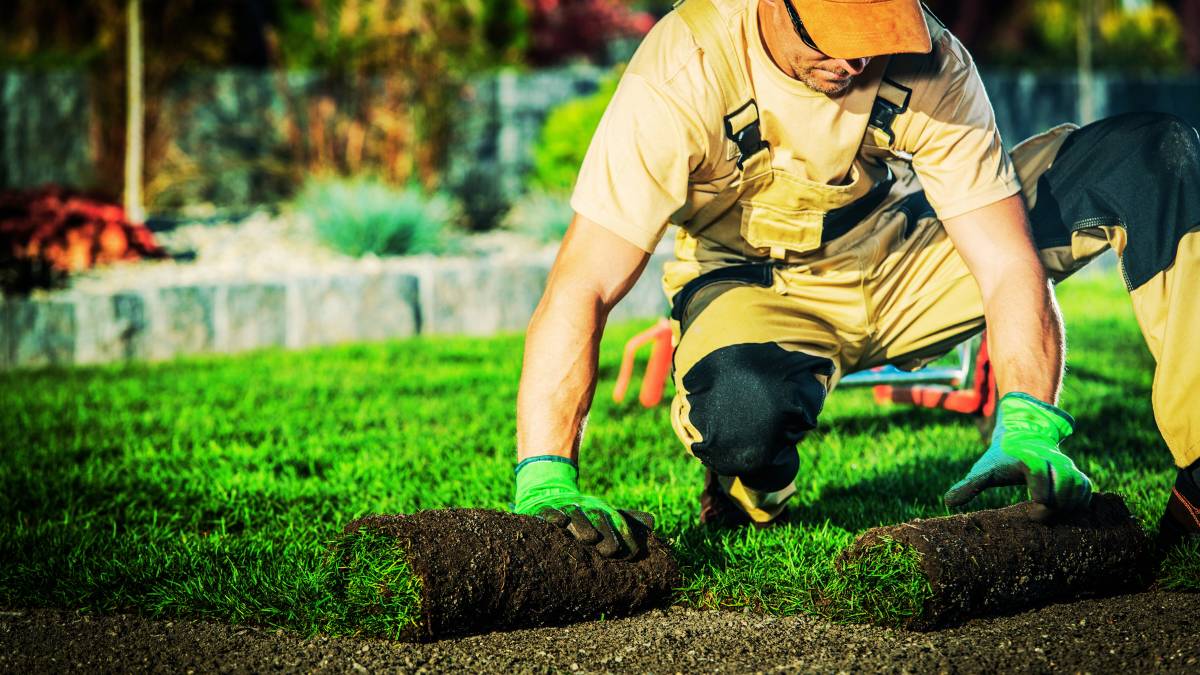Last Updated on June 12, 2024 by Kravelv Spiegel
The world of landscaping is continuously evolving, driven by changes in lifestyle, environmental concerns, and technological advancements. Both companies and homeowners are looking for creative methods to improve their outside areas and make them more aesthetically pleasing, environmentally friendly, and useful. Recognize and adopt the newest gardening trends in order to stay ahead of the game. This article explores the current trends in landscaping services and provides insights on how to implement them effectively.
Sustainable Landscaping
The emphasis on sustainability in landscaping is one of the biggest trends of the day. An increasing number of people are trying to lessen their ecological footprint as environmental challenges become more widely known. Using native plants in landscaping promotes sustainability since they are more suited to the local climate and soil, needing less water and upkeep. Composting techniques and the application of organic fertilizers also contribute to better soil health and a decrease in chemical runoff.
Systems for collecting rainwater are also growing in popularity. By gathering and storing rainwater for use in irrigation, these systems lessen the need for municipal water sources. By incorporating sustainable practices, landscaping services can create beautiful, eco-friendly outdoor spaces that are both cost-effective and environmentally responsible.
Outdoor Living Spaces
The trend of extending indoor living spaces to the outdoors continues to gain momentum. An increasing number of homeowners are aiming to design outdoor spaces that are just as practical and pleasant as their inside spaces. Installing outdoor kitchens, fire pits, sitting spaces, and even outdoor entertainment systems falls under this category.
In order to meet this need, landscaping firms are creating adaptable outdoor living areas through design and construction. In order to create a welcoming atmosphere, these spaces frequently include weather-resistant furnishings, sturdy materials, and well-placed lighting. By blurring the lines between indoor and outdoor spaces, homeowners can enjoy their gardens and yards throughout the year, regardless of the season.
Smart Technology Integration
There is no indication that the use of smart technologies in gardening will go away. From automated irrigation systems to smart lighting, technology is transforming how we manage and enjoy our outdoor spaces. Smart irrigation systems can monitor soil moisture levels and weather forecasts to adjust watering schedules automatically, ensuring that plants receive the right amount of water without waste.
Smart lighting systems, controlled via smartphone apps, allow homeowners to adjust the lighting in their gardens with ease. This not only enhances the aesthetic appeal of the landscape but also improves security. Landscaping services that incorporate smart technology can offer clients greater convenience, efficiency, and control over their outdoor environments.
Edible Gardens
The concept of edible gardens is gaining popularity as people seek to grow their own food and live more sustainably. Edible gardens combine the beauty of traditional landscaping with the practicality of growing fruits, vegetables, and herbs. Raised garden beds, vertical gardens, and container gardening are all techniques used to maximize space and productivity.
Landscaping services can assist homeowners in designing and maintaining edible gardens that are both attractive and functional. By incorporating a variety of plants, including flowering herbs and fruit-bearing shrubs, these gardens can provide fresh produce while enhancing the visual appeal of the landscape.
Water Features
Water features continue to be a sought-after element in modern landscaping. Every outdoor area is made more serene and beautiful by the presence of water elements, such as ponds, streams, waterfalls, and fountains. A more lively and dynamic atmosphere is produced by them as well as the animals they draw, such as birds and butterflies.
Incorporating water features into a landscape design requires careful planning and expertise. Landscaping services can ensure that these features are not only visually stunning but also functional and sustainable. This includes considering factors such as water conservation, maintenance, and safety.
Minimalist Designs
Minimalism in landscaping is all about creating clean, uncluttered spaces that emphasize simplicity and functionality. This trend is characterized by the use of neutral color palettes, geometric shapes, and a limited selection of plant species. Hardscaping elements, such as gravel paths, stone patios, and modern planters, are often used to complement the minimalist aesthetic.
Minimalist designs require careful consideration of each element to ensure harmony and balance. Landscaping services that specialize in minimalist designs can help homeowners achieve a sophisticated, timeless look that requires minimal maintenance.
Native and Pollinator-Friendly Plants
Using native plants in landscaping is becoming increasingly popular due to their adaptability and low maintenance requirements. Native plants are well-suited to local climate conditions, making them more resilient and less reliant on fertilizers and pesticides. Additionally, they provide habitat and food for local wildlife, including pollinators such as bees, butterflies, and birds.
Pollinator-friendly gardens are designed to support and attract pollinators by incorporating a variety of flowering plants that bloom throughout the year. Landscaping services can help create these gardens by selecting the right mix of native plants and designing spaces that provide shelter and nourishment for pollinators.
Hardscaping and Softscaping Balance
Achieving the right balance between hardscaping and softscaping is essential for a well-rounded landscape design. Hardscaping refers to the non-living elements of a landscape, such as patios, walkways, and retaining walls. Softscaping includes the living elements, such as plants, trees, and grass.
A harmonious balance between hardscaping and softscaping can enhance the functionality and aesthetic appeal of an outdoor space. Landscaping services can provide expert advice on how to integrate these elements effectively, creating a cohesive and visually pleasing environment.
Conclusion
Staying ahead of the curve in landscaping requires an understanding of current trends and the ability to adapt to changing preferences and technologies. By embracing sustainable practices, creating versatile outdoor living spaces, integrating smart technology, and balancing hardscaping and softscaping, landscaping services can offer innovative solutions that meet the evolving needs of homeowners and businesses. Whether it’s through the use of native plants, the incorporation of water features, or the design of minimalist gardens, the future of landscaping is bright, promising functional, beautiful, and environmentally friendly outdoor spaces.

